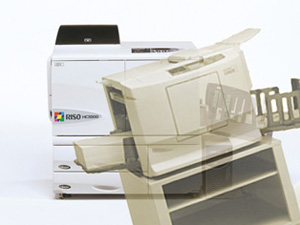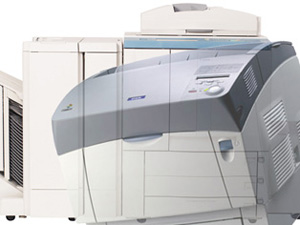|
Screen printing (silk-screening)
Screen printing is a method of printing when reprint is received by forcing paint through printed components of stencil by printing squeegee. It was patented in Manchester in 1907 named SILK SCREEN PRINTING (“printing through silk” or “silk-screening”).
Comparing to classic and some new printing methods with possibilities limited by selection of format, printed materials and thickness of paint layer, screen printing has significant advantages: selection in wide format limits, practically unlimited possibilities of printing on various materials and products, flat and volumetric shape, wide interval of regulating thickness of paint layer and relatively cheap and simple way of production of printing form.
Due to wide possibilities of application, simplicity and cheapness of production of printed forms, screen printing is widely used around the world. In industrially developed countries as a result of appearing of new machines, materials and technologies the quality of screen printing increased significantly. By screen method lines 100 µm and less are printed without problems with optimal definition. Replication of absolute accuracy of sizes of screen printed forms on sheets allows stating that the quality of this printing method is equal to classic printing methods.
Despite development of digital printing kinds, silk-screen printing is indispensable in many aspects due to high image resistance, ecological compatibility and wide spectre of printed materials. |
|
Die stamping
Die stamping is a way of printing image from printing form (cliché) to printing surface by tampon. For production of corporate souvenirs with logotype printing often method of die stamping is used. Die stamping allows to print image almost on any surface (including smooth, embossed and non-absorbing surfaces) – plastic, glass, wood, metal. As a rule, die stamping is used for printing images to pens, lighters, key rings, clocks, calculators, ashtrays, products made of plastics, polyethylene, leather, disposable kitchenware, perfumery packing, office supplies and many other things.
Die stamping is deep indirect printing. Printing is possible with one, two and three colors. Die stamping is more efficient way of printing on ceramics, but provides less, than decal, mechanical strength for printing on cups, ashtrays, plates. |
|
Transfer printing (thermal transfer)
Technology of thermal transfer printing is transfer of image to finished product by intermediate carrier (thermal transfer paper or film).
Image is printed in mirror mode to working surface of paper with special coating. Silk-screening or laser or ink-jet full-color printing may be used for forming image.
Received picture is positioned on product and pressed by thermal press. Under temperature and pressure image is transferred from intermediate carrier to product. |
|
Embossing
One of the most popular types of finishing products. Image, that is formed during embossing, is formed by transferring color layer of special foil or by changing geometry of solid surface under pressure and high temperature. There are solid (blind) and relief embossing.
Solid embossing is a hot foil embossing when sheet of paper or other material is not deformed, but specified image is transferred to a surface from foil.
Relief embossing is a type of embossing when deformation of material with bas-relieving or high relieving of image takes place.
There is relief embossing with foil and without foil. Relief embossing also can be one-level, extruded and embossed.
Embossing is possible on all types of carton, heavyweight paper, various binding materials, leather and leatherette, on ready products with even surface, made of material that is not fusing at high temperature.
During embossing various types of metalized, color and holographic foil of various colors, tints and textures of image. |

|
Risography
Risography is printing method allowing fast, if necessary – in customer’s presence, printing of documents, containing text and graphic images.
Risography combines achievements of modern digital electronics – superb quality of data reading, processing and transfer with advantages of traditional screen printing – high productivity, efficiency and reliability.
Replication in risograph ideal solution for production of advertising cards, booklets, price lists and other blank products.
High speed and low cost of printing make risography one of the most popular replication methods. |

|
Digital printing
Main advantage of printing on laser color printer is high responsiveness with low cost and stable high quality of reprint.
Modern equipment allows fast (if necessary in the presence of a customer) production of run of full-color business cards, booklets, stickers, etc., on paper with density up to 300g/m2. |